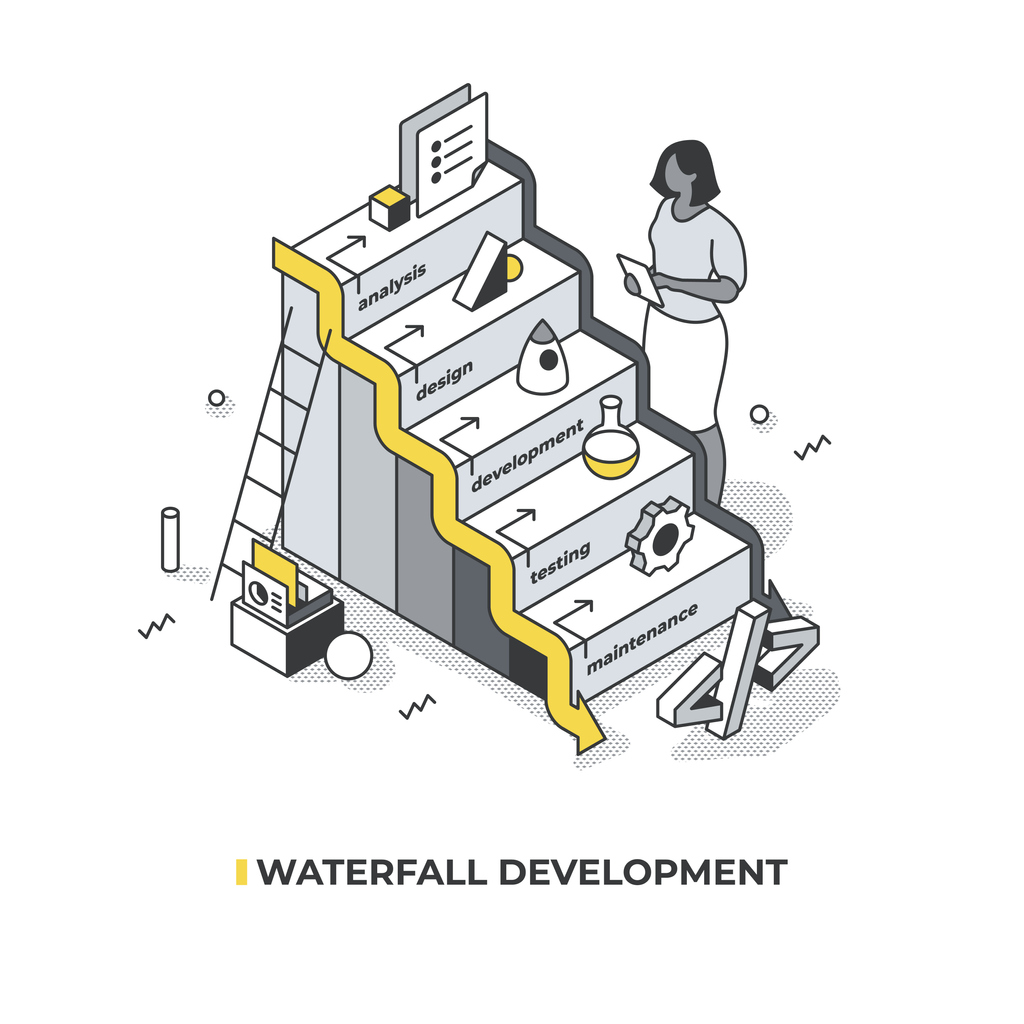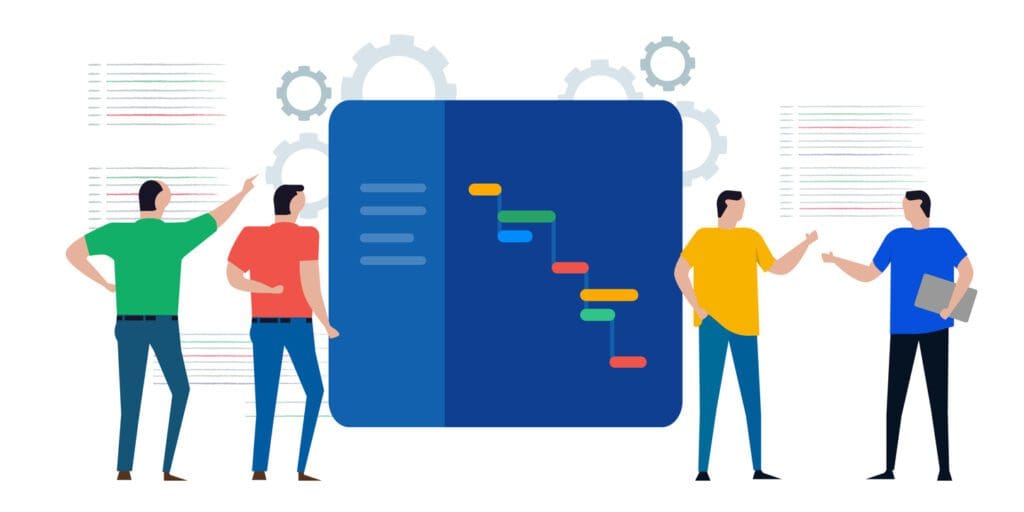Table of Contents
How can Combining OKR and Waterfall Boost Your Business?
As businesses strive to improve their bottom line and stay ahead of the competition, they are constantly searching for ways to optimise their processes and maximise their productivity. One approach that has gained significant traction in recent years is the combination of Objectives and Key Results (OKR) and Waterfall methodology.
While OKR provides a framework for setting and achieving goals, Waterfall methodology offers a structured approach to project management. By combining these two powerful methodologies, businesses can streamline their processes, increase efficiency, and achieve their goals faster.
This article will explore how OKR and Waterfall can collaborate to boost your business and drive success. We’ll dive into the key benefits of this combined approach and provide practical tips for implementing it in your organisation.
So, whether you’re a startup looking to accelerate growth or an established company seeking to optimise your operations, read on to learn how OKR and Waterfall can help you achieve your business objectives.
Understanding OKRs and how they work
Objectives and Key Results (OKR) is a goal-setting framework that originated in Silicon Valley and has since been adopted by organisations worldwide. The OKR methodology involves setting specific, measurable, achievable, relevant, and time-bound objectives (known as “O” in OKR) and identifying key results (known as “KR” in OKR) that will help achieve those objectives.
The objective is a clear and concise statement of what you want to achieve, while the key results are the specific metrics that will measure progress towards that objective.
As long as they align with the overarching business plan, OKRs are often established at the corporate, team, and individual levels. They are often reviewed quarterly, and progress is tracked and shared transparently. This approach encourages collaboration, accountability, and continuous improvement, as teams work together towards a common goal.
Understanding the Waterfall Methodology and its application in business
The Waterfall methodology is a project management strategy that emphasises a sequential and linear process, with each stage being finished before moving on to the next. This approach involves five steps: requirements gathering, design, implementation, verification, and maintenance. Each stage has a clear set of tasks and deliverables, and progress is monitored at each step before moving on to the next.


Benefits of Combining OKR and Waterfall Methodologies
Businesses can benefit from a strong framework for accomplishing their objectives and maximising productivity by combining the OKR and Waterfall methodologies. Some of the key benefits of this cooperative technique include the following:
Clear alignment of goals and tasks
By setting OKRs at the company, team, and individual levels and breaking down projects into smaller, manageable steps with Waterfall, businesses can ensure that everyone is aligned with the overall strategy and working towards the same objectives. This clarity can eliminate confusion and duplication of effort and ensure that resources are used effectively.
Increased accountability and ownership
Each team member clearly understands their duties and responsibilities thanks to OKRs and Waterfall, which promote accountability and ownership. Setting specific metrics to measure progress towards objectives and breaking down projects into smaller steps with Waterfall makes it easier to identify who is responsible for each task and ensure everyone is working towards the same goal.
Continuous improvement and learning
OKRs and Waterfall encourage continuous improvement and learning, as progress is reviewed regularly and transparent feedback is shared. By setting clear objectives and key results and breaking down projects into smaller steps, businesses can identify areas for improvement and adjust their approach accordingly.
Increased efficiency and productivity
Businesses can improve their productivity and effectiveness by streamlining their processes and removing extra steps by combining OKR and Waterfall. This approach encourages teams to focus on the most important tasks and avoid distractions, leading to faster and more efficient project completion.
Tips for implementing OKR and Waterfall Methodologies in your business
Implementing OKR and Waterfall in your business can be a challenging process, but it can also be incredibly rewarding. Here are some tips for successfully implementing this combined approach:


Start Small and Scale Up
Implementing OKR and Waterfall across the entire organisation can be overwhelming, so starting small and scaling up gradually is important. Begin by implementing the approach in one department or team, and then expand to other areas as you gain experience and confidence.
Communicate Clearly and Regularly.
Clear and regular communication is essential to implement OKR and Waterfall successfully. Ensure that everyone understands the approach and their roles and responsibilities, and communicate progress and feedback regularly.
Use Technology to Your Advantage.
Many tools and software are available to help implement OKR and Waterfall, so take advantage of them. These tools can help streamline your processes, automate tasks, and provide insights into progress and performance.
Real-life examples of successful implementation of OKR and Waterfall Methodologies
Many successful companies have adopted the OKR and Waterfall approach, including Google, Intel, and Airbnb. For example, Google uses OKR to set ambitious goals and Waterfall to manage their projects effectively. By combining these methodologies, they have achieved significant growth and success.
Another example is Intel, which uses OKR to set objectives and Waterfall to manage their product development process. This approach has helped them to reduce time to market and increase efficiency, leading to improved business performance.
Common challenges of combining OKR and Waterfall Methodologies and how to overcome them
Implementing OKR and Waterfall can be challenging, and businesses may face common obstacles. These include:
Resistance to Change
Change can be difficult for some employees, particularly if they are used to working differently. To overcome this, it’s important to communicate the benefits of the new approach and involve employees in the implementation process.
Lack of Alignment
If objectives are aligned with the overall business strategy, or if Waterfall stages are aligned with OKRs, it can lead to clarity and duplication of effort. To avoid this, ensure everyone knows the overall strategy and how their objectives and tasks contribute to it.
Overcomplication
OKR and Waterfall can be complex methodologies, and it’s important to keep the implementation simple. Start with a simple approach and build on it gradually, involving employees and stakeholders.
Measuring the Success of OKR and Waterfall Methodologies in Your Business
Even though tracking progress using OKR and Waterfall might be difficult, there are several measures that firms can utilise. These include:
Achievement of Objectives
The most crucial indicator for gauging the effectiveness of OKR and Waterfall is the achievement of objectives. Businesses can determine whether the approach is effective by setting specific, measurable objectives and tracking progress towards them.
Time to Market
Waterfall can help businesses reduce market time by breaking down projects into smaller, manageable steps. By measuring the time it takes to complete each project stage, businesses can identify areas for improvement and adjust their approach accordingly.
Employee Engagement and Satisfaction
OKR and Waterfall can help increase employee engagement and satisfaction by clarifying objectives and tasks and encouraging collaboration and ownership. Businesses can determine whether the approach positively impacts by measuring employee satisfaction and engagement levels.


Conclusion: How OKR and Waterfall Methodologies can help your business achieve maximum productivity
Combining OKR and Waterfall methodologies can give businesses a powerful framework for achieving their goals and maximising productivity. By setting clear objectives and breaking down projects into smaller, manageable steps, businesses can ensure everyone is aligned with the overall strategy and working towards the same goals.
This approach encourages collaboration, accountability, and continuous improvement, increasing efficiency and productivity. The advantages of this combined strategy make the challenges along the way more than worthwhile.
So, whether you’re a startup looking to accelerate growth or an established company seeking to optimise your operations, consider implementing OKR and Waterfall to achieve maximum productivity and drive success.
Join for no cost and start putting your goal-setting techniques into practice right away!



